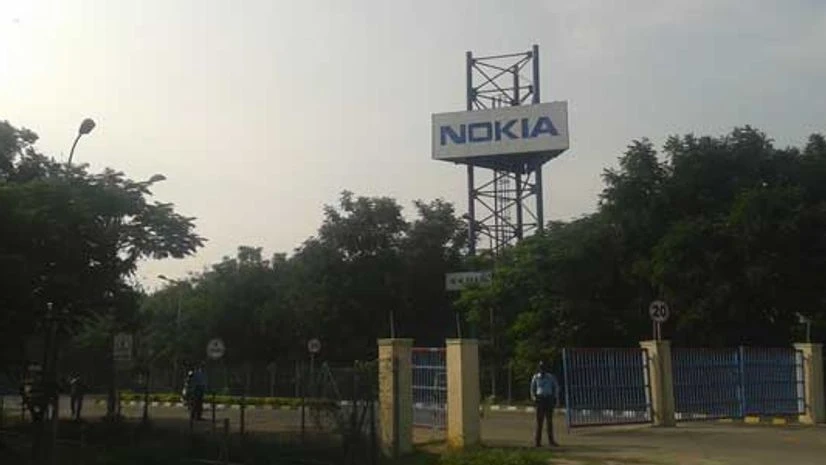Once a showpiece of foreign investment, the factory at Sriperumbudur, about 45 km from Chennai, now looks like a ghost entity. For the around 30,000 workers, 31 October will forever be Black Friday as Nokia officially shutdowns its plant in the state, nine years after it entered India.
Nokia's closure will be the first major wind up by a multinational after the Narendra Modi government took charge in May.
S Arun and three of his friends, who worked at the plant, gathered in front of the factory, both sad and dejected.
"We lost everything, our education, our youth, our life," says Arun, who joined the factory after discontinuing his degree.
More From This Section
His friend Vinodth says that he joined the plant for its brand value, hoping that it will provide a secure life. "Today we are left with nothing, no education, no job, no income and no respect in the family," he says.
The eligibility criteria for joining the plant was 60% at the Higher Secondary level and a transfer certificate. Hence, many like Arun and Vinodth joined the plant, giving up plans for higher education.
Another worker Prabhu says the government, both at the Centre and the state, failed them. So did the court and Indian-born CEOs of Microsoft and Nokia, Satya Nadella and Rajeev Suri respectively.
"We are the orphans," said these workers on Union Minister for law, telecom and Information Technology Ravi Shankar Prasad's statement that government couldn't save Nokia Chennai from becoming an orphan.
These young men are among the over 30,000 people who were dependant on the factory for their livelihood. The factory employed around 8,000 people directly, over 50% of which were women. The average age of the workers was around 25.
Counting the vendors, who were solely dependant on this facility, and other indirect workers the number of people affected comes to over 30,000.
Counting the vendors, who were solely dependant on this facility, and other indirect workers the number of people affected comes to over 30,000.
"If you take away Nokia and the years we spent here, we have nothing as our background. All of us are from a poor background and a majority are from rural areas,” said another employee Saravana Kumar.
Rajan (name changed), aged 27, said, “I fear about how I will take care of the family now."
Many horror and sad stories can be heard in villages in the 100-km radius around the plant. The Sriperumbudur plant was the most productive for Nokia globally, beating even its Chinese plant.
In 2005, the then chief minister J Jayalalithaa proudly announced that her government has convinced Nokia to set up a facility in the state. But the state government did not come to the rescue of the factory, blaming the Centre for its closure. Nor did the Central government despite several petitions from the workers.
In 2005, the then chief minister J Jayalalithaa proudly announced that her government has convinced Nokia to set up a facility in the state. But the state government did not come to the rescue of the factory, blaming the Centre for its closure. Nor did the Central government despite several petitions from the workers.
Established in 2006 over a 200-acre site, Nokia wheeled out the 'Made for India' 1100 model and then slowly ramped up production to make Chennai its single largest unit for handsets globally. Nokia and its suppliers had invested over Rs 1,800 crore in their facilities.
The plant's cumulative production was 800 million handsets. Nokia would export phones worth more than $2 billion a year. Nokia India's overall turnover totalled Rs 151,000 crore between 2005/06 and 2011/12.
History of Nokia operations in India
History of Nokia operations in India
December 1, 2004
Nokia announces its decision to set up a plant in India. Till then, it used to import all handsets sold in India from China.
April 6, 2005
Nokia signs MoU with Tamil Nadu to set up the plant in Sriperumbudur Special Economic Zone (SEZ). It invited seven of its ecosystem partners to invest. Nokia initially committed to an investment of about $150 million for five years. Its cumulative investment now is $300 million
January 2, 2006
Sriperumbudur plant starts commercial production of handsets with 550 people. Nokia first equipment vendor to manufacture both mobile devices and network infrastructure equipment in India
March 11, 2006
Sriperumbudur facility inaugurated by Finland Prime Minister. Factory starts with low and mid-range GSM handsets, which includes the Nokia 1100 model. Jorma Ollila, chairman and CEO also present. Sale crosses one million mark in the same month.
June 2009
Sriperumbdur factory has edged past China as a unit-wise volume producer of Nokia cellphones and becomes Nokia's largest cellphone manufacturing facility in the world.
May 1, 2010
Nokia crosses 250 million handset mark and starts exports to North America and Europe
May 5, 2011
Production crosses 500 million handsets, marking a significant milestone for Nokia's manufacturing operations in India and globally. The milestone was achieved in five years of its operations, marking Chennai's ramp-up among the fastest globally.
End of March 2014
Plant's cumulative production was 800 million handsets. Exports worth more than $2 billion a year. Nokia India's overall turnover totalled Rs 151,000 crore between 2005/06 and 2011/12.

)
